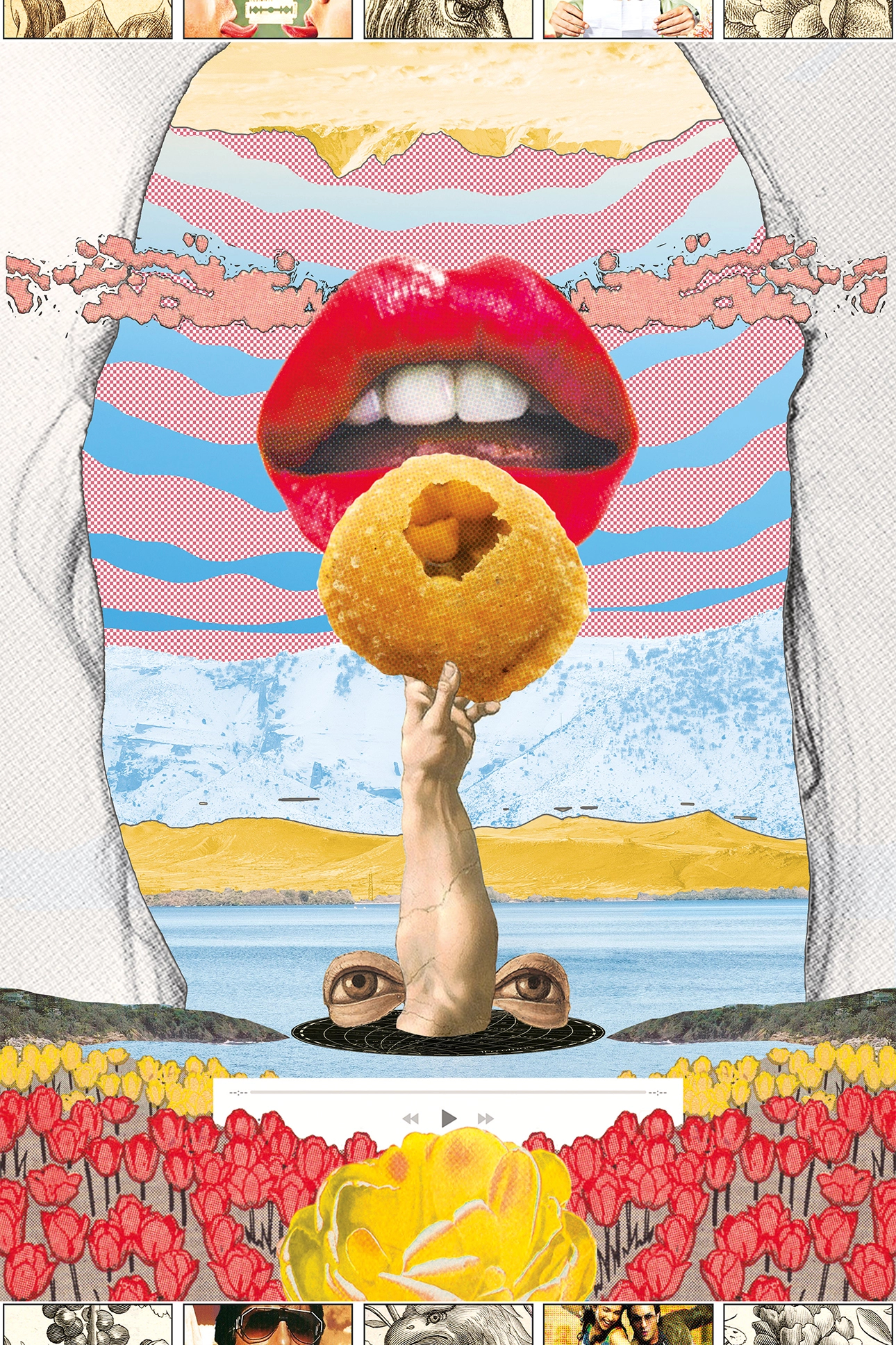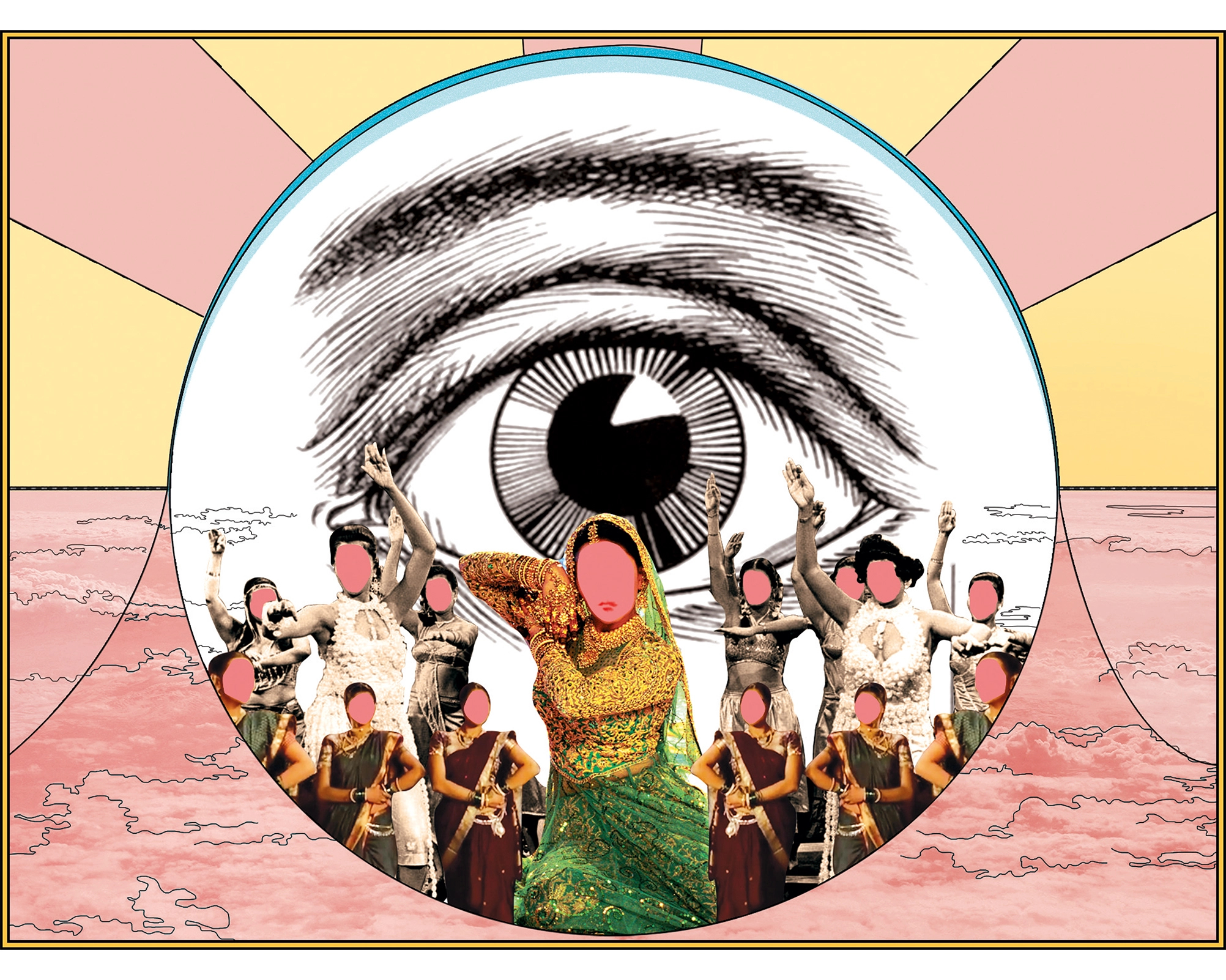
An early sequence in Judgementall Hai Kya (2019), a film whose box office returns do not match the intelligence of its material, is my favourite bit of Hindi cinema from the last year. Bobby (Kangana Ranaut) is grocery shopping in a supermarket with her so-called boyfriend Varun, played by the writer and actor Hussain Dalal, who is whining about the lack of sex in their coupledom. “This is all we ever do — buy eggs and groceries for you,” he says. “After the excitement of sex dies down, this is what marriage boils down to,” she replies. “Aloo-pyaaz (potatoes and onions) in the supermarket.” It is an unexpectedly funny line, this distillation of what marriage means. But there is another thing — Bobby lives by herself; the potatoes and onions and tomatoes are for her consumption. Earlier on, Varun had complained that she never treats him to anything she cooks.
We are used to seeing female characters who cook for others. In the Indian space project film Mission Mangal (2019), Tara (Vidya Balan) fries puris to feed her family, and she’s such an expert at puri-frying that she makes a scientific breakthrough based on it. She hypothesises that if you can fry puris in hot oil even after turning the gas off, it may be possible to power India’s first satellite into Mars’ orbit with a lighter fuel load. In Manmarziyaan (2018), Rumi’s (Taapsee Pannu) first act of love for her husband after her arranged marriage involves frying a batch of pakoras, dipped in a beautiful Amit Trivedi song. In Andhadhun (2019), Simi (Tabu) makes a show of cooking crab for her husband. In English Vinglish (2012), Shashi (Sridevi) has such a reputation for making laddoos that her husband, played by Adil Hussain, announces that his wife was born to make them. An entire household of women across generations gathers to meal prep on the terrace of an old Delhi house in Delhi-6 (2009). These are all acts of filial love (or duty). But how often have you seen a woman buying or making food for herself?
We’ve seen the men enjoy their food. The eponymous hero of Raees (2017), played by Shah Rukh Khan, asks for sliced onions to go with his fresh-off-the-tawa kebabs; Pawan (Salman Khan) sings a song about chicken in Bajrangi Bhaijaan (2015); Rancho (Aamir Khan) gatecrashes weddings to eat free food in 3 Idiots (2009); Bittoo (Ranveer Singh) swears by bread pakoras in Band Baaja Baaraat (2010); Sameer (Saif Ali Khan) says he would go anywhere for cake in Dil Chahta Hai (2001); Vijay (Amitabh Bachchan) dies in Agneepath (1990) asking for his mother’s dal-roti. Of late, the villains are seen especially enjoying their food. Muslims and Mughals devour meat in the series of masala historicals that Bollywood has splashed money on in recent years. The most infamous scene from these is Singh’s Alauddin Khilji tearing into a hunk of meat in Padmaavat (2018), and my favourite is Saif Ali Khan’s Udaybhan grilling a crocodile for his meal in Tanhaji: The Unsung Warrior (2020).
Do you see the women savour food as longingly? All I remember is pani puri or golgappas. The Hindi film heroine seems to exclusively consume these on screen. Deepika Padukone as Meera, a London-trained architect, and Poorvi, the daughter of an upper caste academic, in Love Aaj Kal (2009) and Aarakshan (2011); Sonam Kapoor as Zoya, an affluent Muslim girl from Varanasi (Raanjhanaa, 2013); Ranaut as Tanu, the rebellious bride-to-be from Kanpur, and the jilted Rani from middle-class Delhi in Tanu Weds Manu (2011) and Queen (2013); Anushka Sharma as the small-town Punjabi girl Taani in Rab Ne Bana Di Jodi 92008)…. The most recent incidence is Deepti (Kareena Kapoor Khan), cosmopolitan Mumbai woman, bonding with Monika (Kiara Advani), Chandigarh hick, over golgappas in Good Newwz (2019). Occasionally, pani puri is replaced by ice cream. This is an evidence-based statement. Do a bit of research or jog your memory, and you will find that the women have hardly diversified their screen diets.
But this essay is not about the nutritional status of pani puri. It’s about women. Why do they, across different communities and settings in Hindi films, eat only this specific street snack? Is it a common denominator, the culinary equivalent of Nirma washing powder? Why is it the choice of Zoya, Meera and Taani?
Observe carefully and you might see what I do: that these girls are not so different from each other after all. They’re all “feisty”, “street-smart”, and “unconventional”, straining against preconceived notions about how to live their lives. For instance, the London girl that Padukone plays doesn’t have the small-town conservative background of Kapoor’s Zoya or Sharma’s Taani. But she defies the expected norms in her register of life — she organises a break-up party before she moves from London to Delhi for work. Only Rani in Queen is different: she is a sweet — rather than sassy — middle-class girl. But when her boyfriend proposes to her while eating pani puri, she doesn’t hear it. The vendor informs her of the proposal, and she cheekily makes him tell her suitor that she accepts.

Good Newwz is premised on the painfully conservative idea that your children must be “your own blood”. The female characters are placed in an unusual situation when a sperm mix-up at an IVF centre means they give birth to children who are not fathered by their husbands. Both women accept the situation better than the men do, and the bonding happens over pani puri — the headstrong woman’s choice, whether she is from aspiring Chandigarh or modish Mumbai.
Often, the heroine’s pani-puri-eating doubles as an act of compassion towards the “shy hero”, to loosen him up. Think also of how golgappas or an iced lolly is eaten — mouth wide open, not too different from the motions of performing fellatio. Over-reading a simple thing? Perhaps. But there is more evidence on my side: Katrina Kaif’s long-standing mango drink advertisements, helpfully titled Aamsutra.
You are thinking that there must be films where the women have a more varied menu. True, there are a couple. Consider, though, how the characters of these women are constructed. In Hasee Toh Phasee (2014), Parineeti Chopra’s Meeta — who holds a doctorate in biochemistry — knows her soup and Chinese restaurants. She is aware that two portions of “one by two” is greater than one full bowl of soup. But, since she is bipolar, she also frequently pops pills and bats her eyelashes weirdly. The film Salaam Namaste (2005) devotes an entire song to Ambi’s (Preity Zinta) midnight ice-cream cravings. But, she is pregnant and can therefore get away with this “unreasonable” desire. In Dil Dhadakne Do (2015), emotionally fragile Neelam Mehra (Shefali Shah) is often munching on something, with her son and husband reminding her that her weight loss plans will not work. At the time of her breakdown, she crams her mouth with goodies in a room alone, her lips ghoulishly smeared with chocolate. It suggests that female characters — and by extension, women in general — eat without inhibition only if they are pregnant or mentally ill.
Is it unpleasant when a woman likes to eat? Or unfeminine? Malnourished women are, in fact, the reality of India, and popular culture reflects it. Data from the 2015-’16 National Family Health Survey found that 53 per cent of Indian women of reproductive age are anaemic, a condition often caused by malnutrition. It’s not just a remote statistic. I can share an anecdote from my family — my mother told me that whenever her grandmother would serve eggs, she would get only half of one, while her brother and male cousins got two each.
I am not suggesting a social-message film on the mid-day meal scheme, à la Toilet: Ek Prem Katha (2017) which promotes the Swachh Bharat Abhiyan, or Sui Dhaaga (2018) which is a pitch for Modi’s Make In India programme. How would it be if a woman tucked in with gusto in a Hindi film, without being chided, pregnant or afflicted with a mood disorder? As it were, Judgementall Hai Kya is about mental health, but it uses food beautifully as a graph for its protagonist. There, at the start of the film, in the supermarket scene, Bobby is as normal as she can be. She cooks for herself, doesn’t feel the need to feed her boyfriend and staves off temptation by licking some Nutella from a jar that she doesn’t buy. Later, as her condition gets the better of her, she eats more sugar, chocolate bars and ice cream. But when she can help it, she does what she can to sustain herself, boyfriend be damned.